Abstract
An enzyme system which converts ornithine to proline was partially purified from extracts of cells of Clostridium botulinum and of Clostridium PA 3670 by fractionation with ammonium sulfate and by dialysis in the presence of 0.01 m ornithine. Nicotinamide adenine dinucleotide (NAD) was the only cofactor required for maximal activity of the partially purified system. A possible intermediate in the conversion was accumulated when a high concentration of proline was used as substrate and the NAD was maintained in the oxidized state by adding lactic dehydrogenase. Small but significant amounts of this or a similar compound were trapped with either ornithine or proline as substrate when o-aminobenzaldehyde was added to reaction mixtures. The accumulation of the o-aminobenzaldehyde reaction product was NAD-dependent with both substrates. The compound accumulated from proline was identified as Δ1-pyrroline-5-carboxylic acid on the basis of the melting point of the 2,4-dinitrophenylhydrazone, and by paper chromatography of the reaction product formed with o-aminobenzaldehyde. Also, extracts of C. botulinum cells oxidized reduced NAD (NADH) in the presence of the product from proline or in the presence of Δ1-pyrroline-5-carboxylic acid, but did not do so in the presence of the other possible intermediate, Δ1-pyrroline-2-carboxylic acid. 14C-Δ1-pyrroline-5-carboxylic acid was reduced to 14C-proline by these extracts in the presence of NADH. These data indicate that the conversion of ornithine to proline by C. botulinum and Clostridium PA 3679 cells involves an oxidation of ornithine to glutamic-γ-semialdehyde which undergoes ring closure to Δ1-pyrroline-5-carboxylic acid. The latter compound is then reduced to proline.
Full text
PDF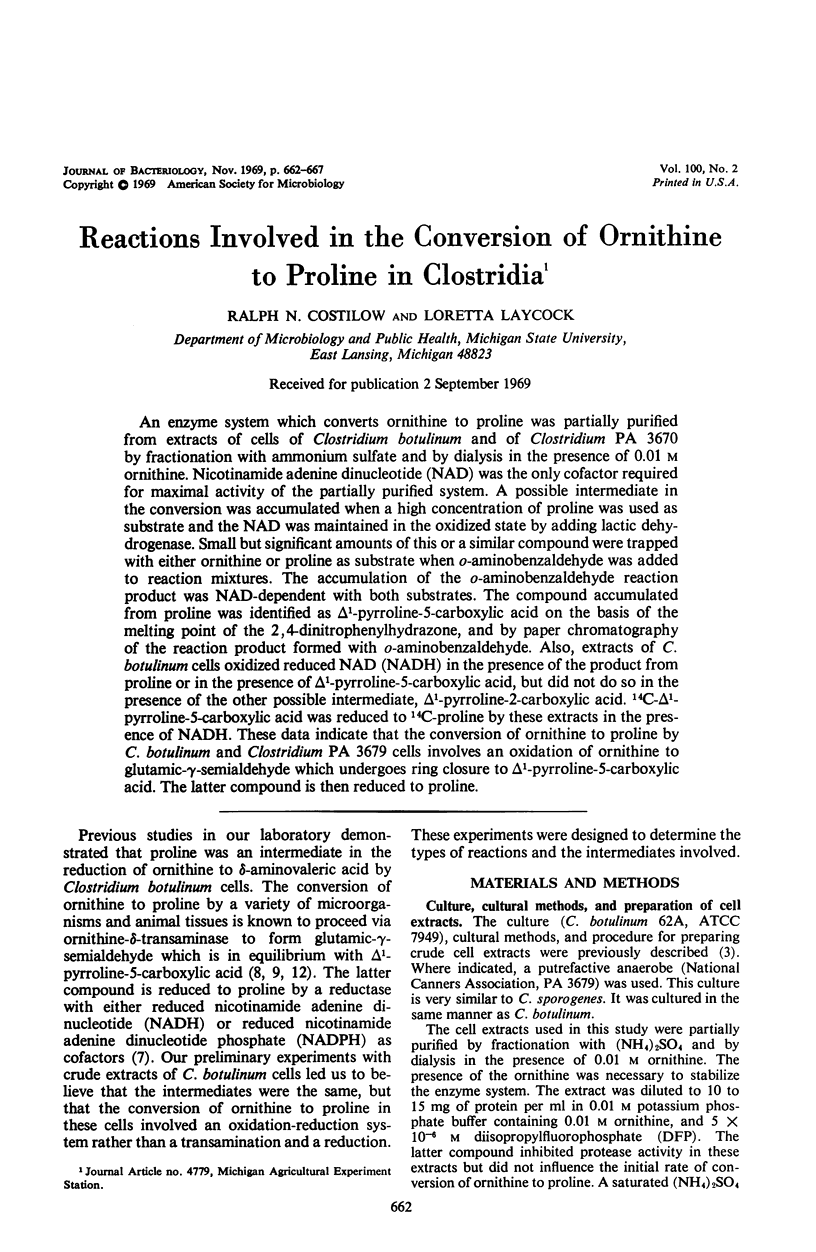
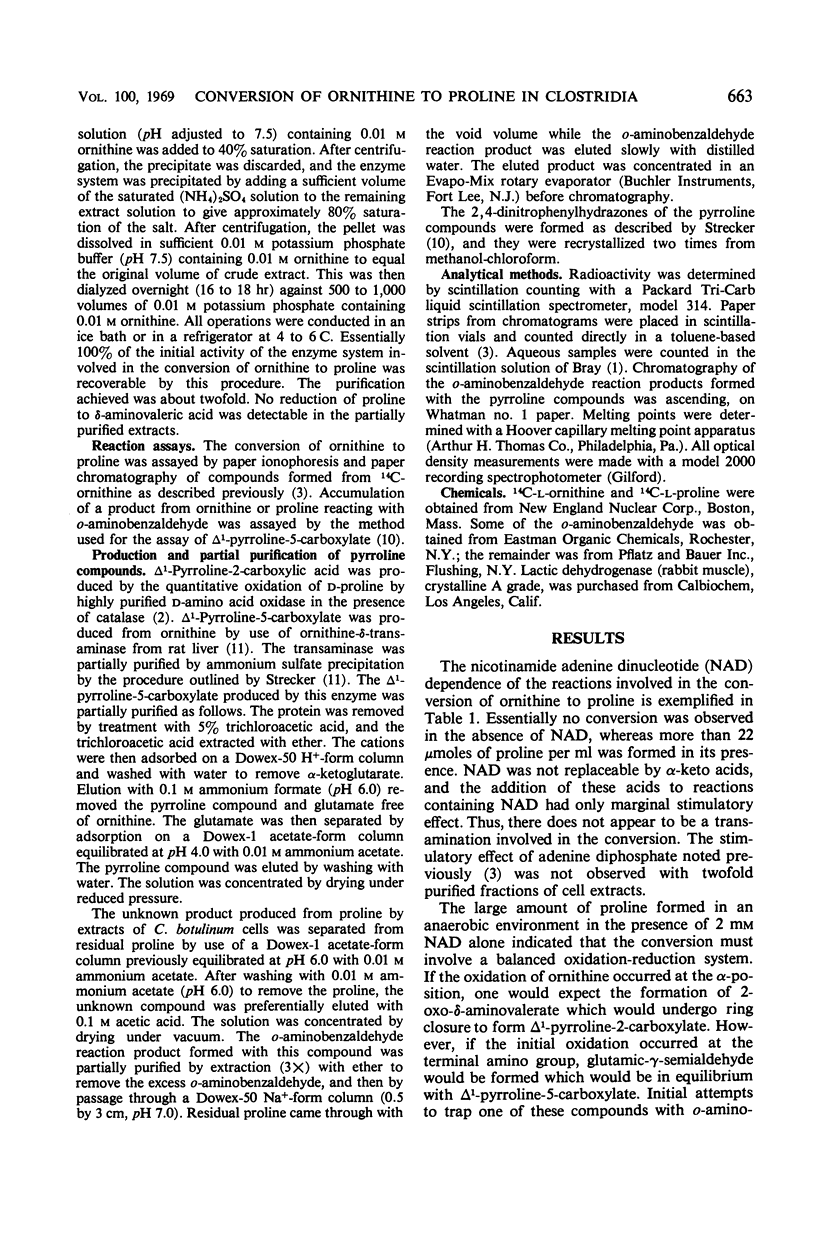
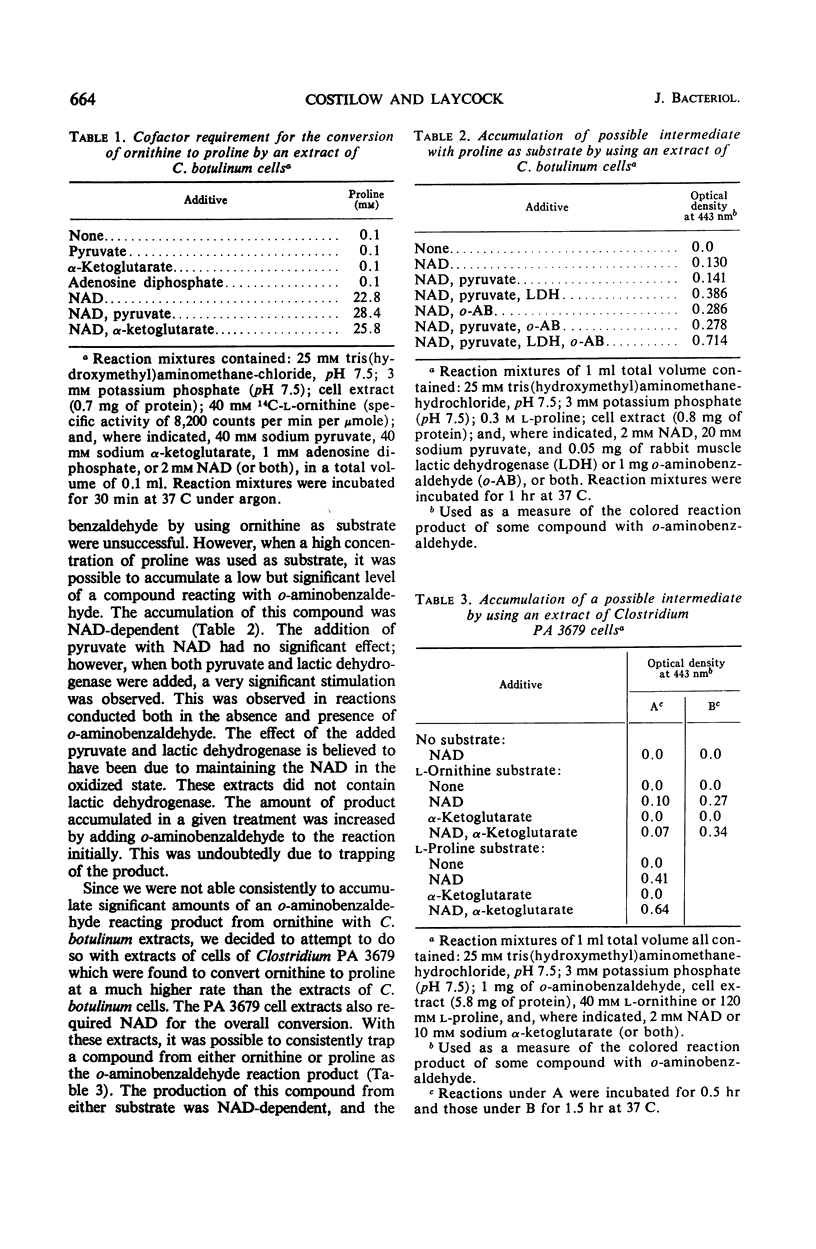
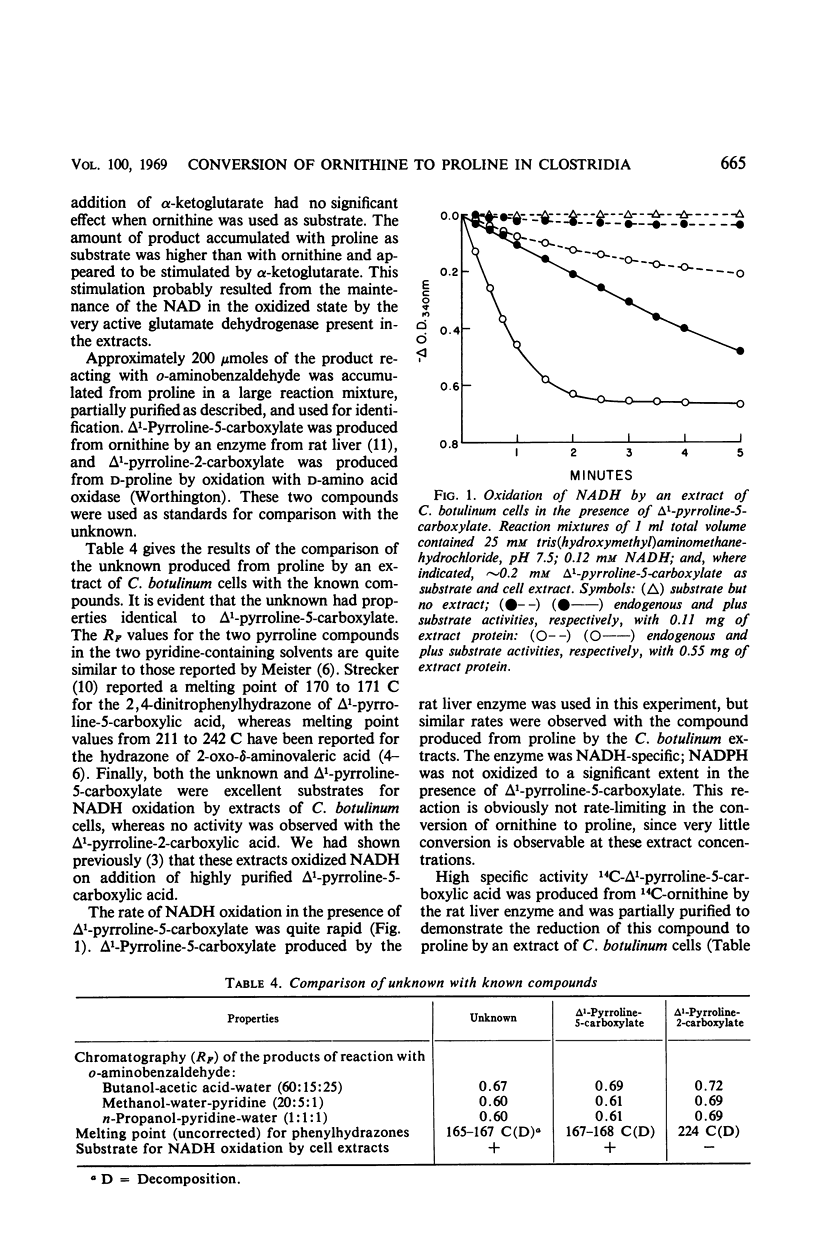
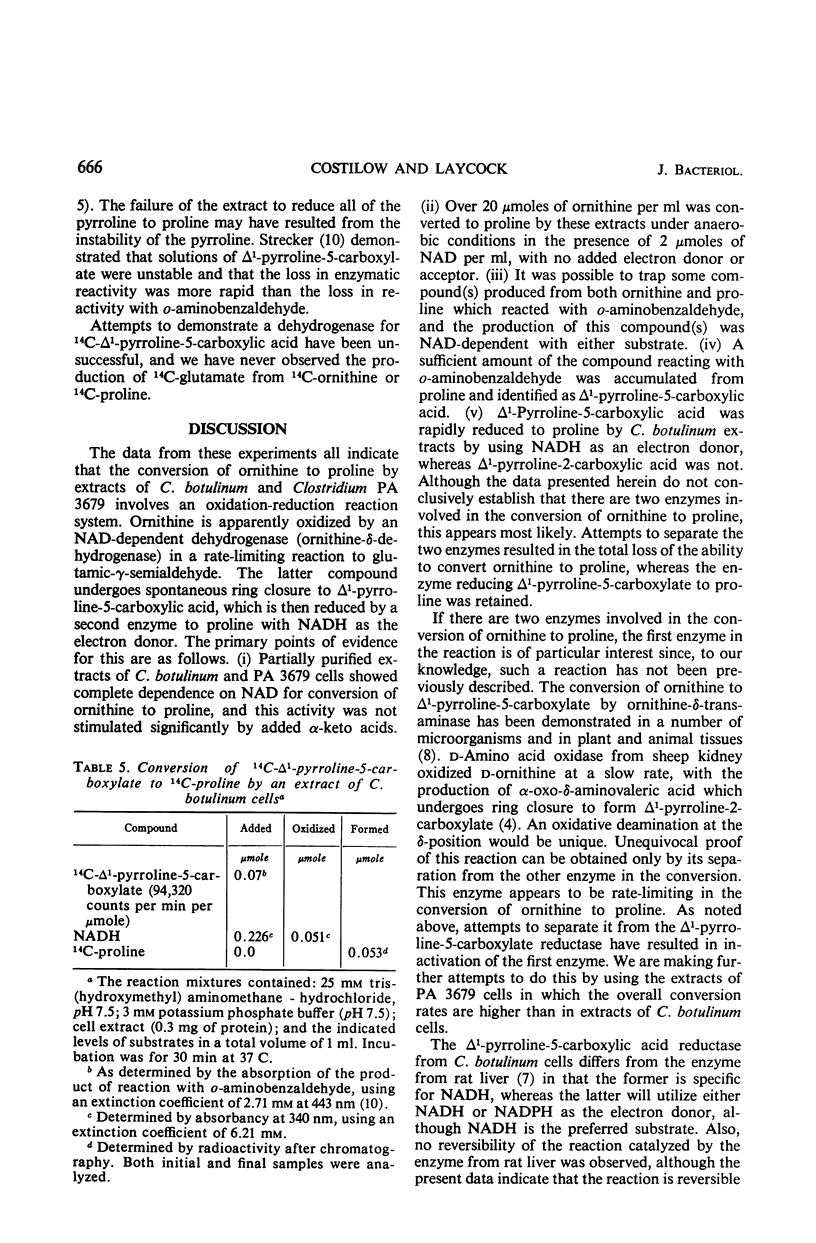
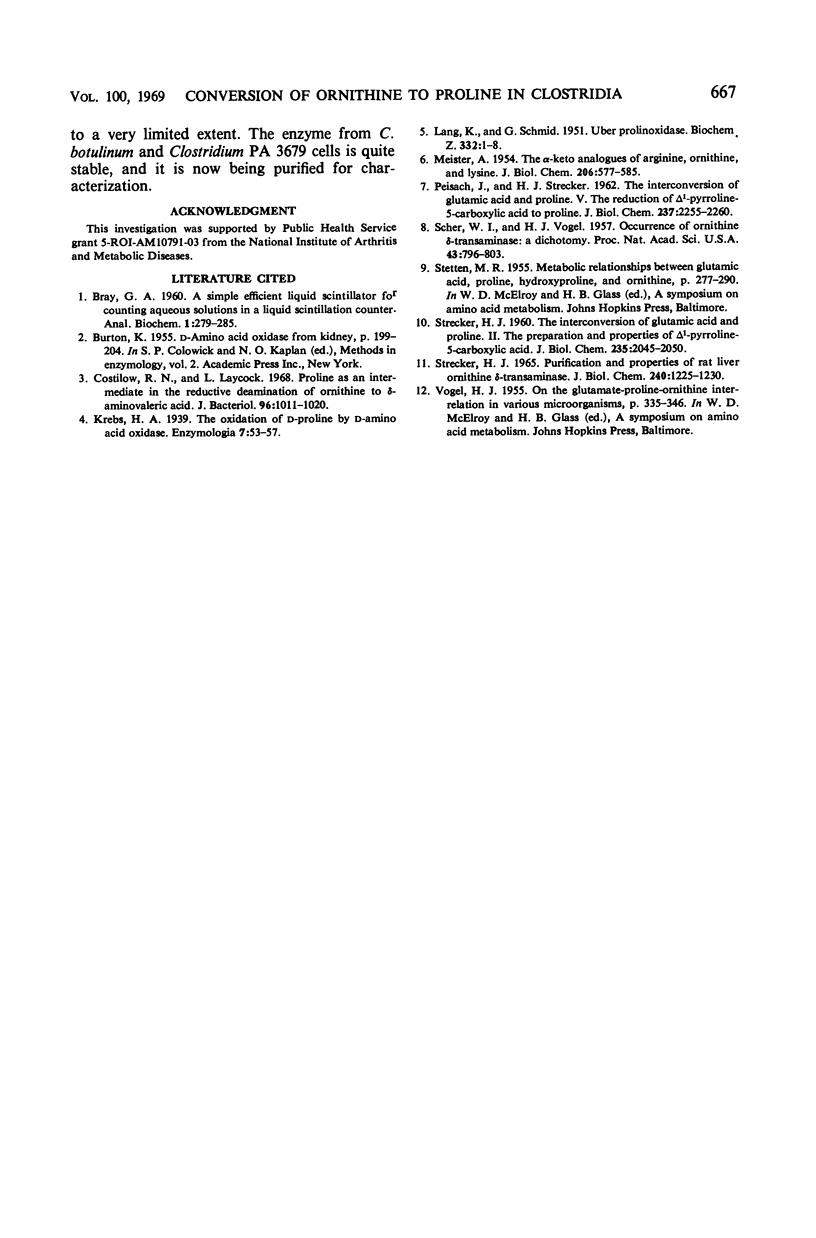
Selected References
These references are in PubMed. This may not be the complete list of references from this article.
- Costilow R. N., Laycock L. Proline as an intermediate in the reductive deamination of ornithine to delta-aminovaleric acid. J Bacteriol. 1968 Oct;96(4):1011–1020. doi: 10.1128/jb.96.4.1011-1020.1968. [DOI] [PMC free article] [PubMed] [Google Scholar]
- LANG K., SCHMID G. Uber Prolinoxydase. Biochem Z. 1951;322(1):1–8. [PubMed] [Google Scholar]
- MEISTER A. The alpha-keto analogues of arginine, ornithine, and lysine. J Biol Chem. 1954 Feb;206(2):577–585. [PubMed] [Google Scholar]
- PEISACH J., STRECKER H. J. The interconversion of glutamic acid and proline. V. The reduction of delta 1-pyrroline-5-carboxylic acid to proline. J Biol Chem. 1962 Jul;237:2255–2260. [PubMed] [Google Scholar]
- STRECKER H. J. PURIFICATION AND PROPERTIES OF RAT LIVER ORNITHINE DELTA-TRANSAMINASE. J Biol Chem. 1965 Mar;240:1225–1230. [PubMed] [Google Scholar]
- STRECKER H. J. The interconversion of glutamic acid and proline. II. The preparation and properties of delta 1-pyrroline-5-carboxylic acid. J Biol Chem. 1960 Jul;235:2045–2050. [PubMed] [Google Scholar]
- Scher W. I., Vogel H. J. OCCURRENCE OF ORNITHINE delta-TRANSAMINASE: A DICHOTOMY. Proc Natl Acad Sci U S A. 1957 Sep 15;43(9):796–803. doi: 10.1073/pnas.43.9.796. [DOI] [PMC free article] [PubMed] [Google Scholar]


